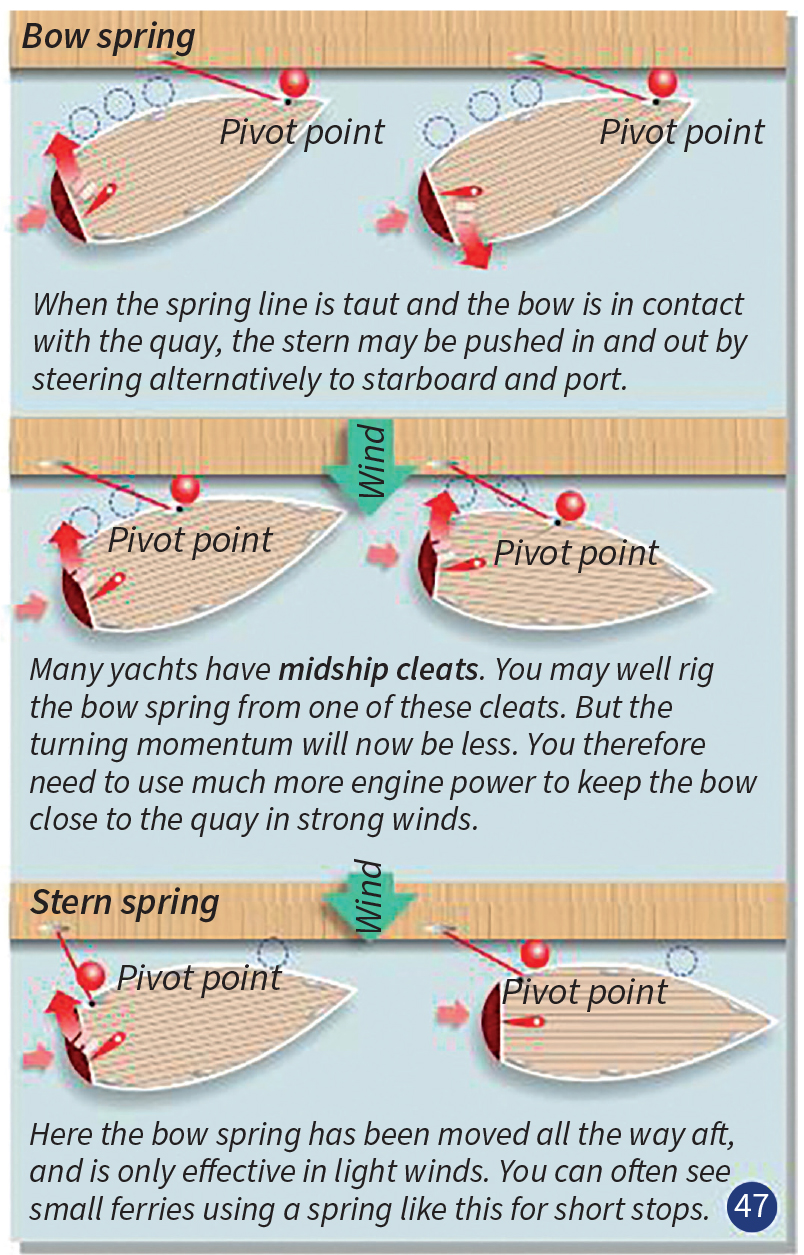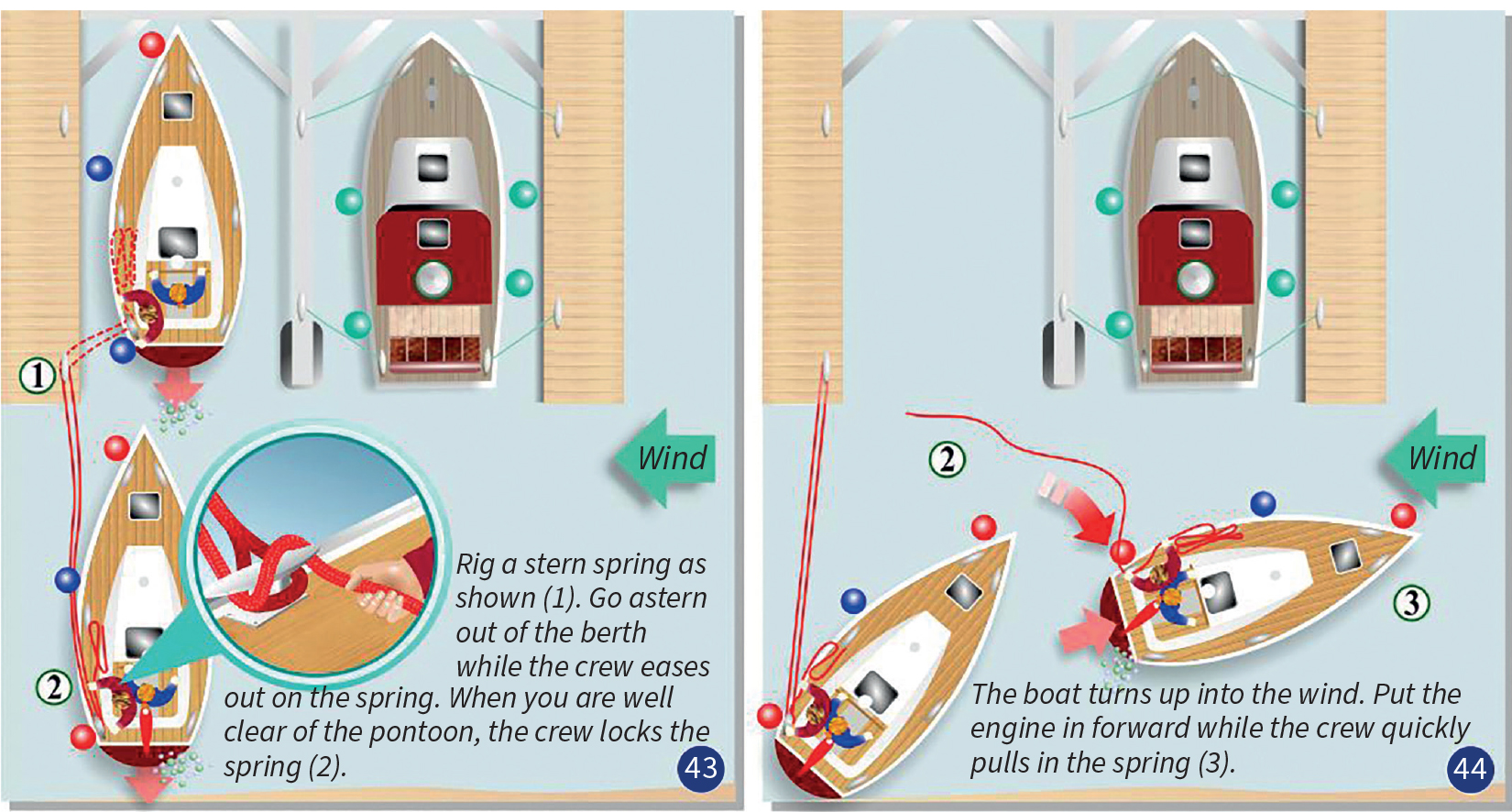Using Spring Lines
Book Extract
How spring lines work
It is wise to practise using spring lines and get to grips with how they work. This may get you out of trouble and prevent damage to your boat. Even if your boat is equipped with a bow thruster, it is necessary to know how to use spring lines. (You can, for example, use a stern spring together with a bow thruster if the latter, for some reason, doesn’t have enough power.)
How the Bow Spring Works
The bow spring prevents the boat moving forwards as soon as the bow has made contact with the quay (normally via a fender). At the same time, the slipstream passing the rudder will create a sideways force that tries to turn the boat around the pivot point. This point will be where the spring line is fastened onboard and will not move when the bow is in contact with the quay and the spring line is taut. If you rig the spring from a midship cleat, it will be less efficient as the lever arm on which the rudder force will act, and therefore the turning momentum, will be less.
How the Stern Spring Works
The stern spring prevents the boat moving astern as soon as the stern has made contact with the quay (normally via a fender). The rudder force will, however, not work in the same way as for the bow spring, and the helm can therefore be kept in neutral position all the time. The engine power will try to pull the boat astern against the spring and the boat will start to turn around the pivot point where the spring has been made fast.

‘Springing’ the boat around a corner
When you want to go astern ‘around a corner’ and get the bow up into the wind or into a current, you may rig a long stern spring led back onboard. Let go the other mooring lines and start going astern out of the berth while the crew, holding the boat clear of the pontoon, ease out on the spring.
When the boat is well clear of the berth, the crew locks the spring (2). The boat will now turn into the wind (or the current). Continue going astern until the bow is close enough to the wind. Then go forwards and out while the crew quickly pulls in the spring.

© Not to be reproduced without written permission from Fernhurst Books Limited.